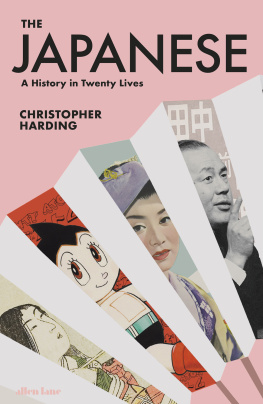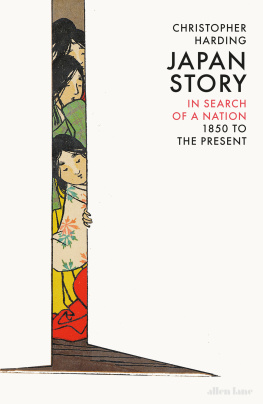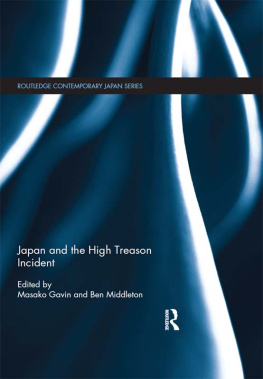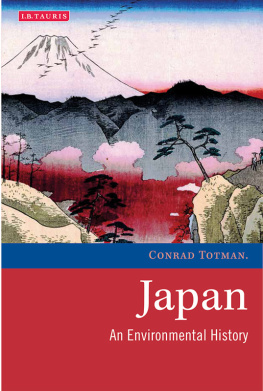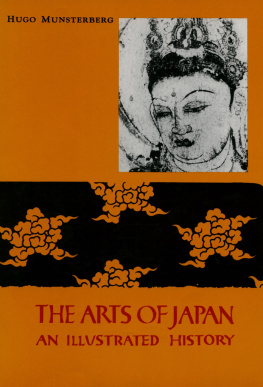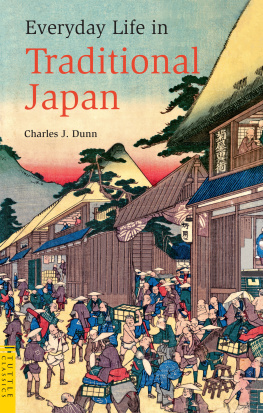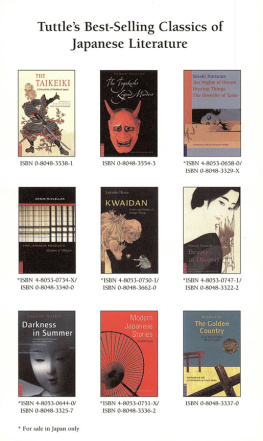BY THE SAME AUTHOR
Japan Story: In Search of a Nation, 1850 to the Present
Christopher Harding
THE JAPANESE
A History in Twenty Lives

PENGUIN BOOKS
UK | USA | Canada | Ireland | Australia
India | New Zealand | South Africa
Penguin Books is part of the Penguin Random House group of companies whose addresses can be found at global.penguinrandomhouse.com.

First published by Allen Lane in 2020
Copyright Christopher Harding, 2020
The moral right of the author has been asserted
Cover images: Murasaki Shikibu (The Art Institute of Chicago. Photo Bridgeman Images), Astro Boy ( Tezuka Productions), Hibari Misora ( Nippon Columbia Co., Ltd.), Tanaka Kakuei (Photo Bettmann/Getty Images), Emperor Kanmu (Photo Universal History Archive/UIG /Bridgeman Images)
ISBN: 978-0-141-99229-7
This ebook is copyright material and must not be copied, reproduced, transferred, distributed, leased, licensed or publicly performed or used in any way except as specifically permitted in writing by the publishers, as allowed under the terms and conditions under which it was purchased or as strictly permitted by applicable copyright law. Any unauthorized distribution or use of this text may be a direct infringement of the authors and publishers rights and those responsible may be liable in law accordingly.
To Kae, with love.
List of Maps
List of Illustrations
ILLUSTRATIONS IN THE TEXT
Photographic acknowledgements in italics
Queen Himiko, statue, Kanzaki, Japan. Shutterstock.
Prince Shtoku with his two sons, woodblock print after an original 8 th century painting. CPA Media Pte Ltd/Alamy.
Emperor Kanmu, 16th century painting, Enrayku-ji Temple, Japan. CPA Media Pte Ltd/Alamy.
Murasaki Shikibu at her writing desk, detail from an 18 th century woodblock print by Choshun Miyagawa, in a private collection. De Agostini Picture Library/Bridgeman Images.
Hojo Masako, statue, Izunokuni, Japan. AFLO.
Shinran, detail from a hanging scroll, 13th14th century. Nara National Museum, Japan. All Rights Reserved.
Scene from Zeamis play, Izutsu (The Well), woodblock print, 1926, by Tsukioka Kgyo. Reproduced by courtesy of the Lavenberg Collection of Japanese Prints, Portland, Oregon.
Oda Nobunaga, late 16 th century portrait by Kan Motohide. PhotoCollection2/Alamy.
Hasekura Tsunenaga, painting, 1615, by Claude Deruet. Galleria Borghese, Rome, Italy. Heritage Images/Alamy.
Ihara Saikaku, late 17 th century portrait by Haga Issh. National Museum, Tokyo, Japan. DNP Art Communications Co., Ltd.
Sakamoto Ryma, photographed Katsurahama, c.1866. Collection of Kochi Prefectural Museum of History, Kochi, Japan.
Kusumoto Ine, 19 th century photograph. Alamy.
Shibusawa Eiichi, photographed in New York, 1915. Library of Congress Prints and Photographs Division Washington, D.C.
Tsuda Umeko, photographed at Bryn Mawr College, c.1890. Courtesy of Tsuda University Archives, Japan.
Ikeda Kikunae and the formula for umami, photomontage. Alamy.
Yosano Akiko, photographed at home in Tokyo, 1936. The Mainichi Newspapers/AFLO.
Osamu Tezuka photographed in Tokyo, 1962. Sankei/Getty Images.
Tanaka Kakuei on the campaign trail in Niigata, 1976. The Asahi Shimbun/Getty Images.
Empress Masako at the Geku outer shrine of Ise Jingu in Mie Prefecture, November 2019. Newscom/Alamy.
A Note to the Reader
Japanese names appear in this book in the standard Japanese order of family name followed by given name. Macrons are used to indicate elongated vowel sounds except in the case of place names that are well established in English (e.g. Tokyo).
Introduction
A beautiful day, like an English June day, but hotter. Though the Sakura (wild cherry) and its kin, which are the glory of the Japanese spring, are over, everything is a young, fresh green. Wooded hills, small picturesque valleys, clear blue wavelets brightened by the white sails of innumerable fishing-boats. Streams abound, and villages of wooden houses and temples with strangely curved roofs. It is all homelike, liveable, and pretty, the country of an industrious people. Not a weed is to be seen.
Isabella Bird, Unbeaten Tracks in Japan (1880)
The serving maid picked up slice after slice from this living fish, which, although alive, had been already carved. There is a refinement of barbaric cruelty in this which contrasts strangely with the geniality and loving nature of the Japanese. The miserable object with lustrous eye looks upon us while we consume its own body
Christopher Dresser, Japan: Its Architecture, Art, and Art Manufactures (1882)
Who are the Japanese? To the Victorian-era travellers who launched and shaped the Wests modern love affair with Japan, they appeared to be a people of polar opposites. The haughty samurai and the obsequious peasant inhabiting the same Edenic landscape. The kindly innkeeper and his fish-torturing staff. The demure and modest geisha wrapped in layer after layer of luxurious kimono, and the denizens of mixed-sex bathhouses naked and shameless, laughing and leering.
There followed a century of Western fascination and puzzlement, as Victorian expectations went largely unrevised. Distant in geography, culture and language, the Japanese tended to be imagined en masse and in the abstract; bound at some level, it was assumed, to a basic consistency in their ideas and values if only these could be accurately discerned. A mid twentieth-century generation struggled, as a result, to reconcile Japanese aggression in the Asia-Pacific with a culture of peaceful reflection temples and shrines, gardens and lakes so precious that Kyoto was passed over for atomic destruction in 1945. Post-war media portrayals of Japan took contrast and contradiction as their keynotes: kimono-clad women riding the futuristic bullet train; grey identikit salarymen wandering through noisy, neon-lit neighbourhoods devoted to fun, fantasy and joyful abandon.
Only with Japans late twentieth-century emergence as a cultural superpower manga, anime, film and pop, food, literature and video games did a more nuanced picture begin to emerge: of diverse regions and neighbourhoods, classes and professions; competing ideologies and rival visions of the future. Who are the Japanese? was steadily revealed as a question asked not only by outsiders, but by the Japanese themselves. In fact, it is the challenge and conundrum at the heart of almost two millennia of recorded history. How do you take a 3,000-kilometre-long archipelago, running from frozen wastelands in the north down to subtropical rainforest in the south, and make it Japan? How do you persuade people who live in very different ways their languages, loyalties and beliefs to come together and call that place home? It is a task that has taxed some of the most influential figures in Japanese history: emperors and shoguns, shamans and warlords, poets and revolutionaries, scientists, artists and adventurers.
And it taxes Japans leaders today, as the countrys population ages and shrinks. Ever fewer workers struggle to support an ever larger proportion of the elderly and infirm financially and physically. The choices are stark: more babies, more robots or more immigration. The third option challenges long-held ideas in Japan about the Japanese as a reasonably homogenous bunch, a social or even spiritual whole. How does such a club adapt to welcome new members?

